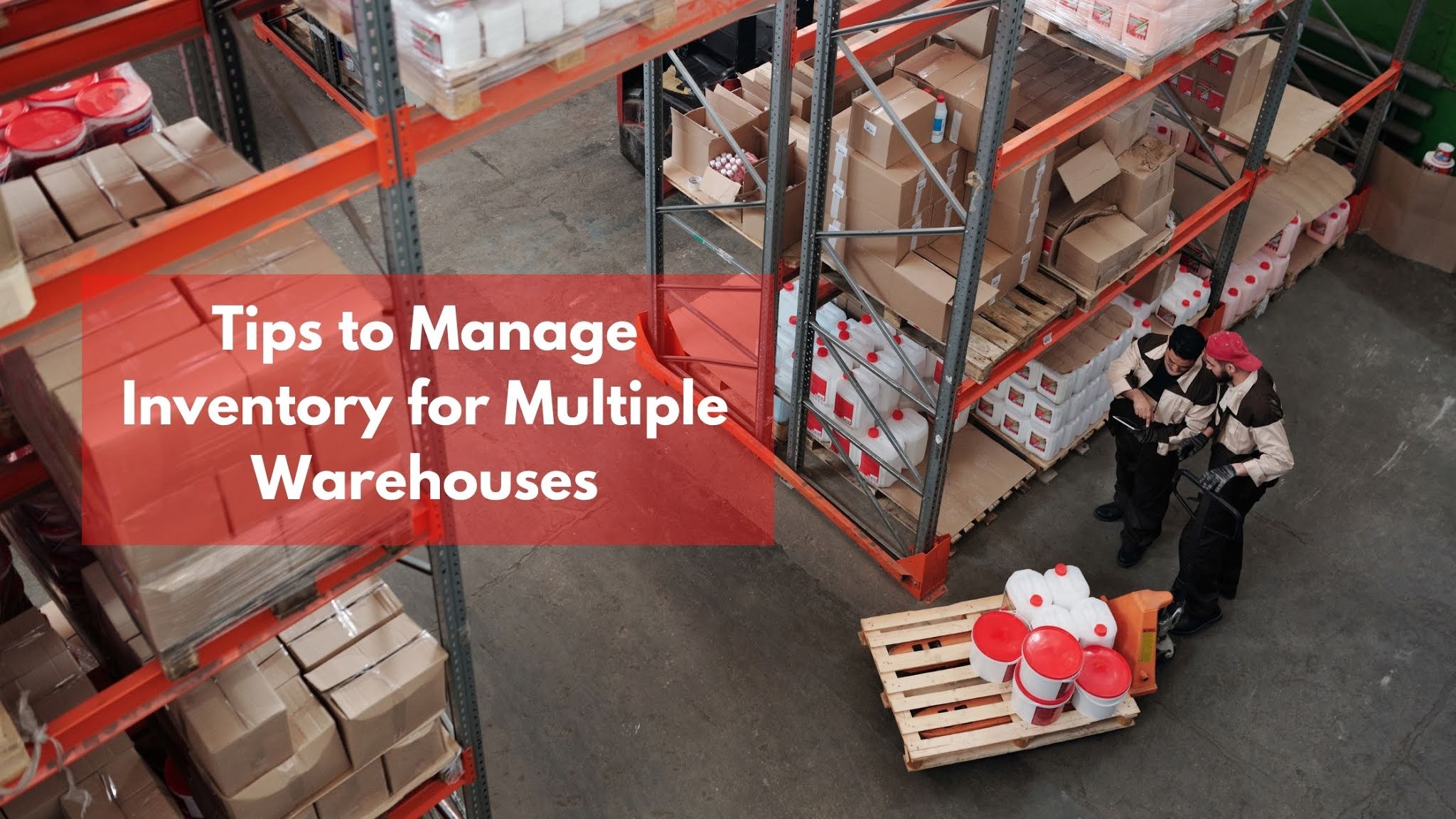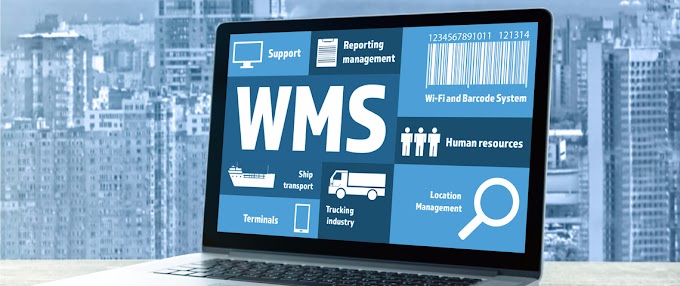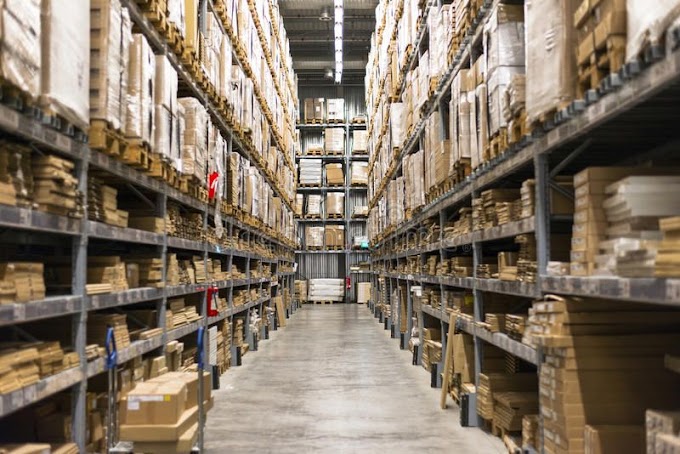Running a business with physical products poses a variety of challenges — one among them being inventory.
Maintaining and controlling steady stock levels is an obstacle many retail business owners face daily, which is compounded when your inventory is in additional than one warehouse.
While holding stock in multiple warehouses poses its challenges, there are some simple tactics retail business owners can implement to assist streamline your supply chain and make sure that stock levels remain steady.
Why Use Multiple Warehouses?
Before we dive into advice on how to manage inventory across multiple warehouses, let's first glance at the benefits of this strategy.
The Advantages of Multi-Warehouse Operation
Many brands begin with one warehouse to host all their inventory — which works for them, for a short time. It's easier to stay an accurate count of all of your inventory and keep your supply chain simple with one warehouse.
However, once companies begin to scale, having one warehouse during a single location may not cut. When a brand targets a growing global audience, shipping your items from one warehouse may cause shipping delays for your customers.
There also are potential cost-savings — having inventory hosted at multiple warehouses near the most critical geographic concentration of your customers can reduce transport costs. Let's check out a scenario:
If your only warehouse is in any, but you've got a growing contingent of consumers in l. a., the transport costs to urge products across the continental U.S. regularly add up. However, if you opened a California warehouse, fulfilment costs might be far less costly per order (even after factoring within the warehouse's cost and logistics for your second warehouse).
Companies also can use multiple warehouses to consolidate certain products. Using an equivalent example above, consider this:
Brand A has their primary fulfilment centre in N.Y., but an excessive number of l. a. customers buy 75% of its best-selling product. The corporate can stock a California warehouse with those top products so that L.A. customers can get quick shipping (and you save on overall transport costs).
The Challenges of Multiple Warehouses
Although a multi-warehouse strategy has its advantages, using quite, one fulfilment centre also can pose some serious challenges.
If you've already split your stock between two or more warehouses, you're likely conscious of the significant common frustrations of this strategy. A number of the most critical obstacles a business can face include:
- Maintaining stock counts: once you have quite one warehouse, ensuring that each of your products stays stocked is often a challenge. When you're working in one warehouse, it's easy for the others in your supply chain to be "out of sight, out of mind," which may cause low inventory counts before you recognize it. Out-of-stock products can cause supply chain inefficiencies and lost revenues.
- Cross-warehouse communications: Because warehouses tend to be a long way apart, it's impossible to possess employees who run those warehouses jammed into one office. With remote workers managing each warehouse, businesses often run into communication issues.
- Mixing up files for various warehouses: When companies don't maintain separate file systems for every warehouse (like inflow, outflow, and invoices), it's easy for orders and shipments to urge involved between warehouses — mostly if you employ a centralized file system.
Although these are just a couple of the common challenges companies face, it's possible to work in multiple warehouses and keep your sanity intact efficiently.
Tips to Manage Inventory Across Multiple Warehouses
Keep Data Synced Across Locations With the Proper Tools
As with any process, using the right technology can make inventory management far more manageable.
When you have multiple locations that need inventory management, you would like a robust tool to satisfy your needs—using an inventory management system to automate a number of those tedious, manual processes and gain more transparency into your operations across all the locations where you house inventory.
When trying to find the proper inventory management tools for your business, ensure your technology of choice can:
- Monitor stock levels across all locations
- Transfer products from one warehouse to a different
- Sync with other crucial components of your business
- Build fulfilment workflows that scale
- Create purchase orders
- Run reports that provide transparency into your inventory and operations
Revamp Your Warehouse Layout
It isn't enough to easily automate your back-end processes — retailers should also take a strict check out of the physical warehouses.
Examine the layouts of all of your warehouses. Are they optimized for efficiency? is that the structure logical and straightforward for workers to navigate? If all of your warehouses are well-organized, then the layout can positively affect the speed at which customers receive their orders. When products aren't appropriately categorized, or your warehouse may be a confusing maze, it takes longer for workers to seek out and ship them bent customers. And as we all know, faster, accurate shipping equals higher customer satisfaction.
But before ripping out all of your shelves to start over, take a glance at a couple of simple ways you'll update your warehouse to streamline the fulfilment process:
- Move popular products closer to the exits so employees can quickly send these orders out.
- Make sure every shelf is labelled, and every one frame has the right products.
- Create an easy-to-read map of your large warehouses. Send digital versions to all or any relevant employees and post copies in strategic locations throughout your warehouse locations.
- Bigger isn't necessarily better — especially when it involves warehouse space. Measure the period of your products. Upping your building size may offer you more room for storage, but it also can significantly increase the period, resulting in fulfilment delays.
Take Geography into consideration
When fixing a replacement warehouse or moving an existing one, don't forget to require geography under consideration.
Choosing the proper location for your warehouse is crucial to fulfilling orders faster. After consulting sales data, you'll find the regions or cities with high concentrations of your customers and factor it into your decision about subsequent warehouse location.
While it'd be tempting to quickly put a warehouse as close as possible to your customers, choosing one geographic location over another has inevitable tradeoffs. For instance, if you set a warehouse in a large city where most of your customers live, you'll likely pay more rent and labour costs. On the opposite hand, if you select an area during a country, your rental expenses will be lower, but transport costs will increase.
Every potential warehouse space will have pros and cons — the trick is to seek a balance between proximity to customers and other overhead expenses.
Also, read this related blog - Inventory Management: 7 Reasons Why SMBs Need It!








0 Comments